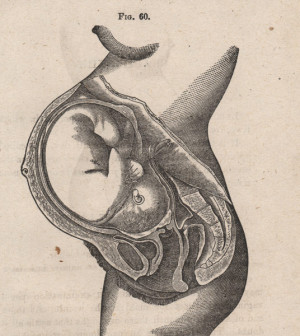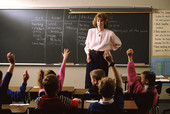- Navigating Your Midlife Crisis: Embracing New Possibilities
- City Raccoons Showing Signs of Domestication
- Mapping the Exposome: Science Broadens Focus to Environmental Disease Triggers
- One Week Less on Social Media Linked to Better Mental Health
- Your Brain Changes in Stages as You Age, Study Finds
- Some Suicide Victims Show No Typical Warning Signs, Study Finds
- ByHeart Formula Faces Lawsuits After Babies Sickened With Botulism
- Switch to Vegan Diet Could Cut Your Greenhouse Gas Emissions in Half
- Regular Bedtime Does Wonders for Blood Pressure
- Dining Alone Could Mean Worse Nutrition for Seniors
The ABCs of Successful Classroom Design


Classroom design can have a major impact on student achievement, a new study says.
“For students to learn to their full potential, the classroom environment must be of minimum structural quality and contain cues signaling that all students are valued learners,” the study authors wrote.
Two of the most important features are lighting and temperature, according to the researchers who reviewed the latest scientific evidence to come up with recommendations to improve students’ learning and success.
Students exposed to more natural light do better in class than those with less exposure to natural light, the study found. However, 16 percent of schools with permanent buildings and 28 percent of schools with portable classrooms have unsatisfactory natural lighting, according to the U.S. National Center for Education Statistics.
The best temperature range for learning is between 68 and 74 degrees Fahrenheit, but 16 percent of schools with permanent buildings and 12 percent with portable classrooms have unsatisfactory heating, the study authors said.
The study was published Nov. 4 in the new journal Policy Insights from the Behavioral and Brain Sciences.
A classroom’s appearance, and how it is decorated, can also affect academic performance, Sapna Cheryan, of the University of Washington, and colleagues noted.
For example, classroom objects that depict the success of groups who traditionally face educational barriers (for example, photos of women scientists) can boost school achievement for these groups, the researchers said in a journal news release.
However, items that appeal only to certain students — such as a large number of science fiction objects in a computer science classroom — may discourage students who don’t identify with those objects from taking those courses, they added.
The investigators also found that “token” symbols that represent certain groups of people — for example, American Indian mascots — can cause lower self-esteem in students from those groups.
More information
The American Academy of Pediatrics has more about school.
Source: HealthDay
Copyright © 2025 HealthDay. All rights reserved.










